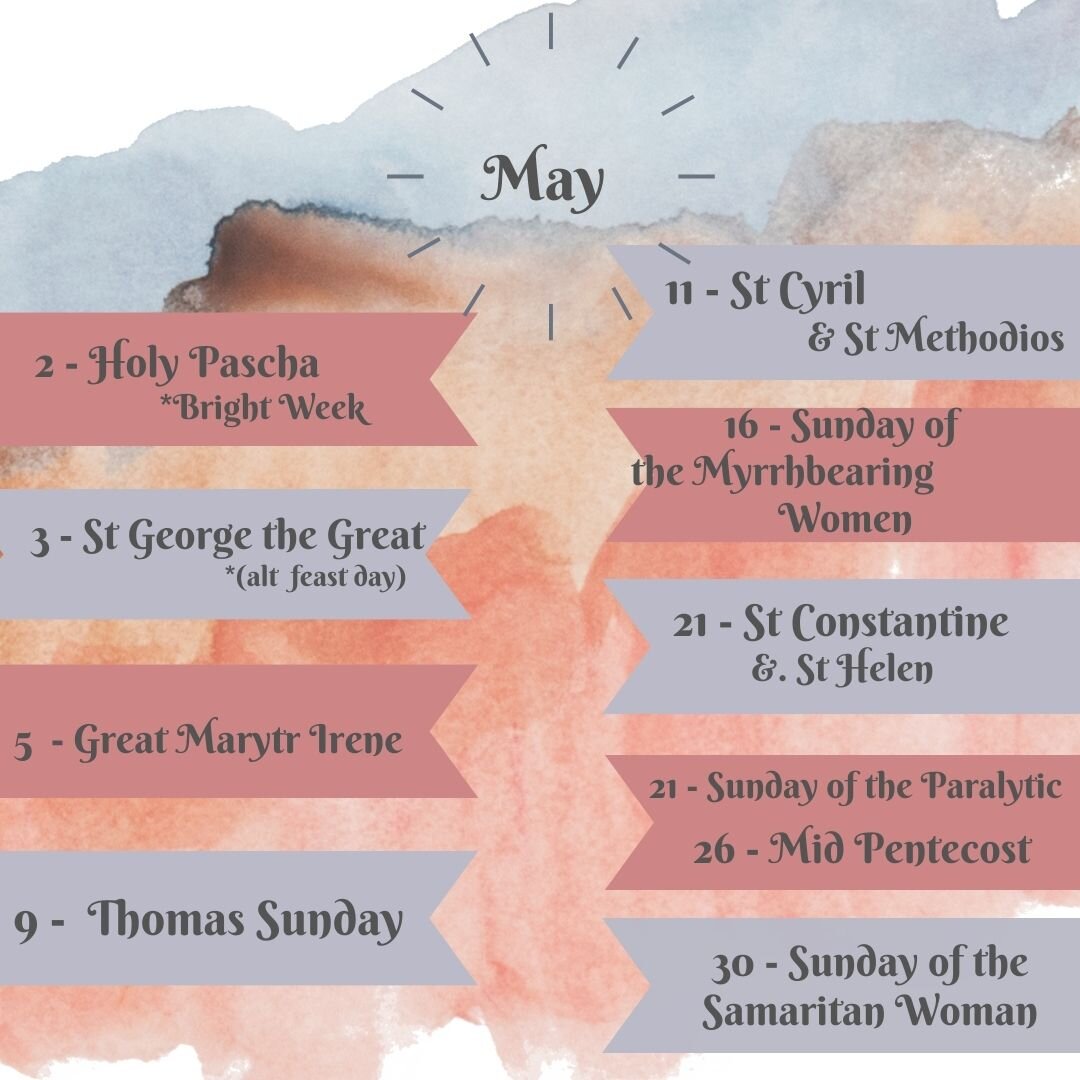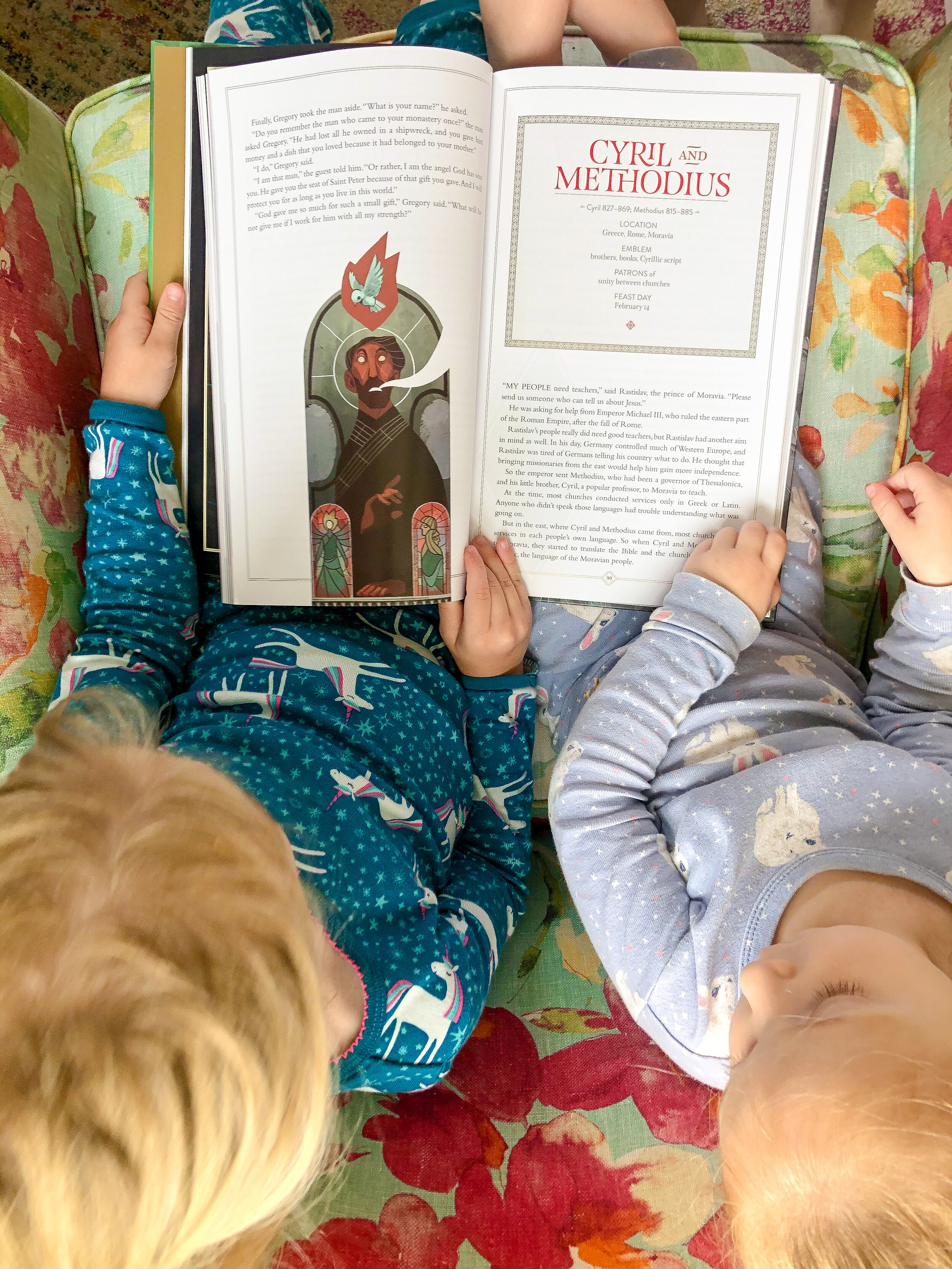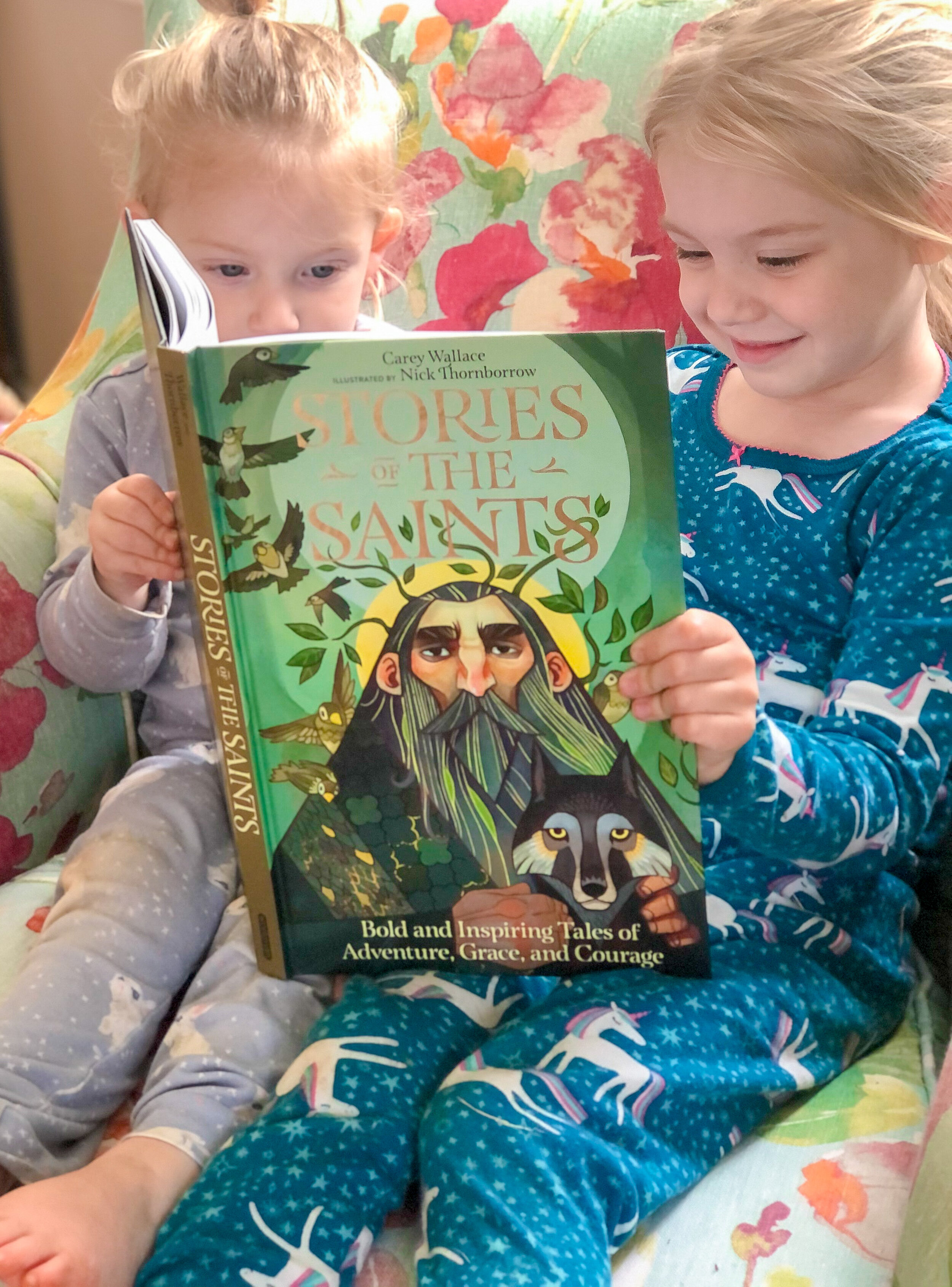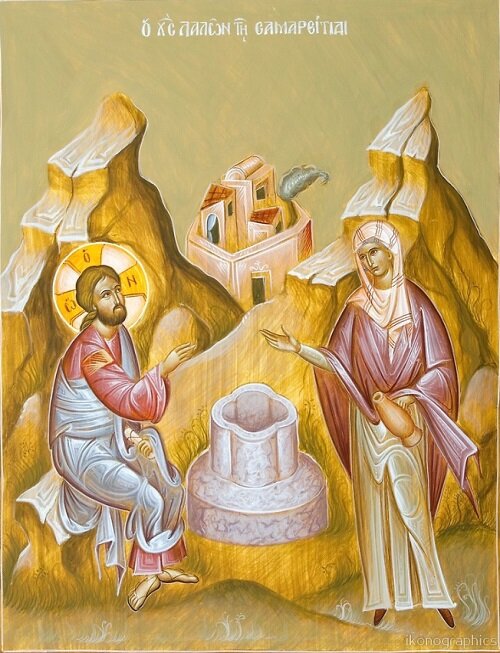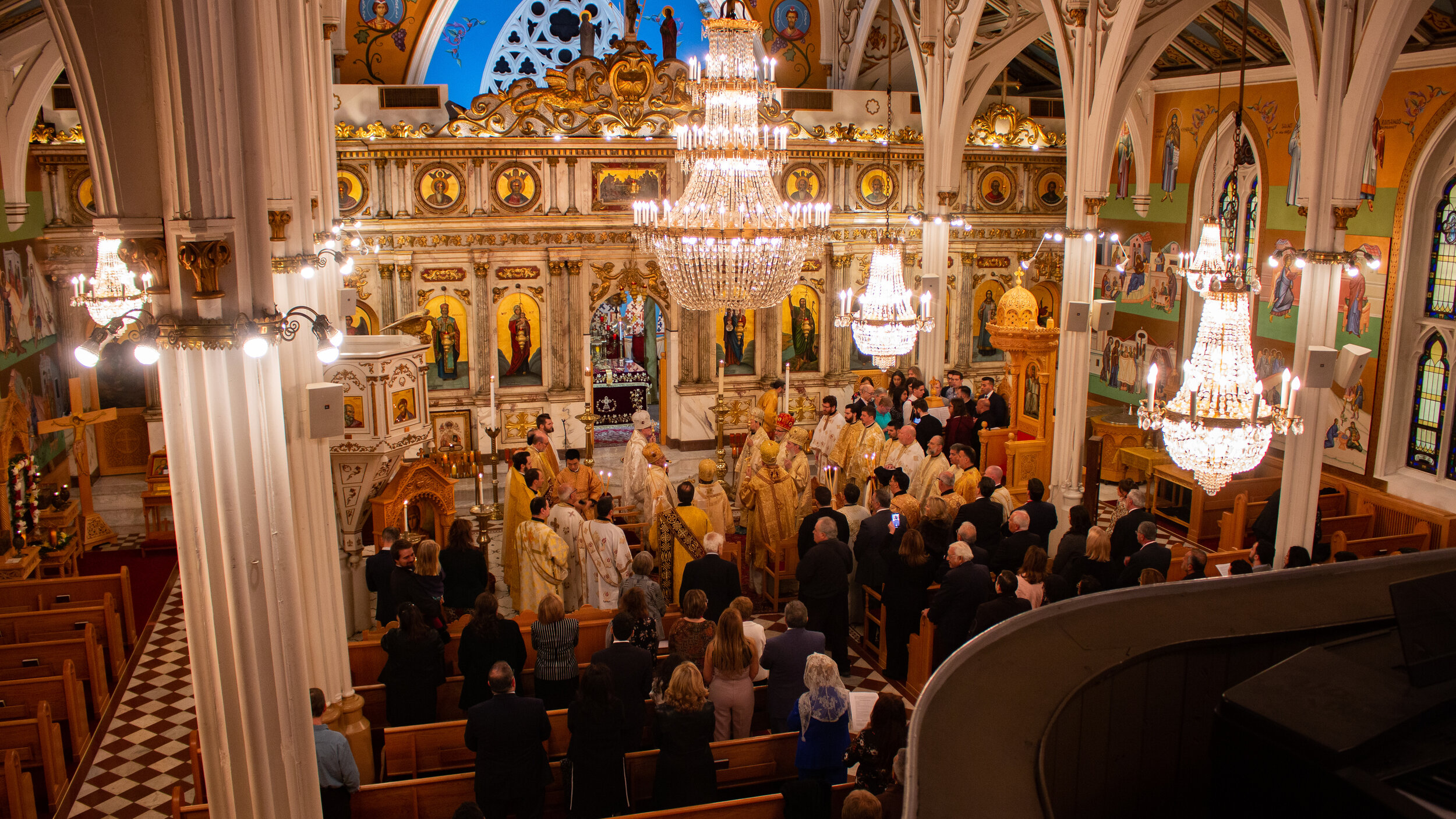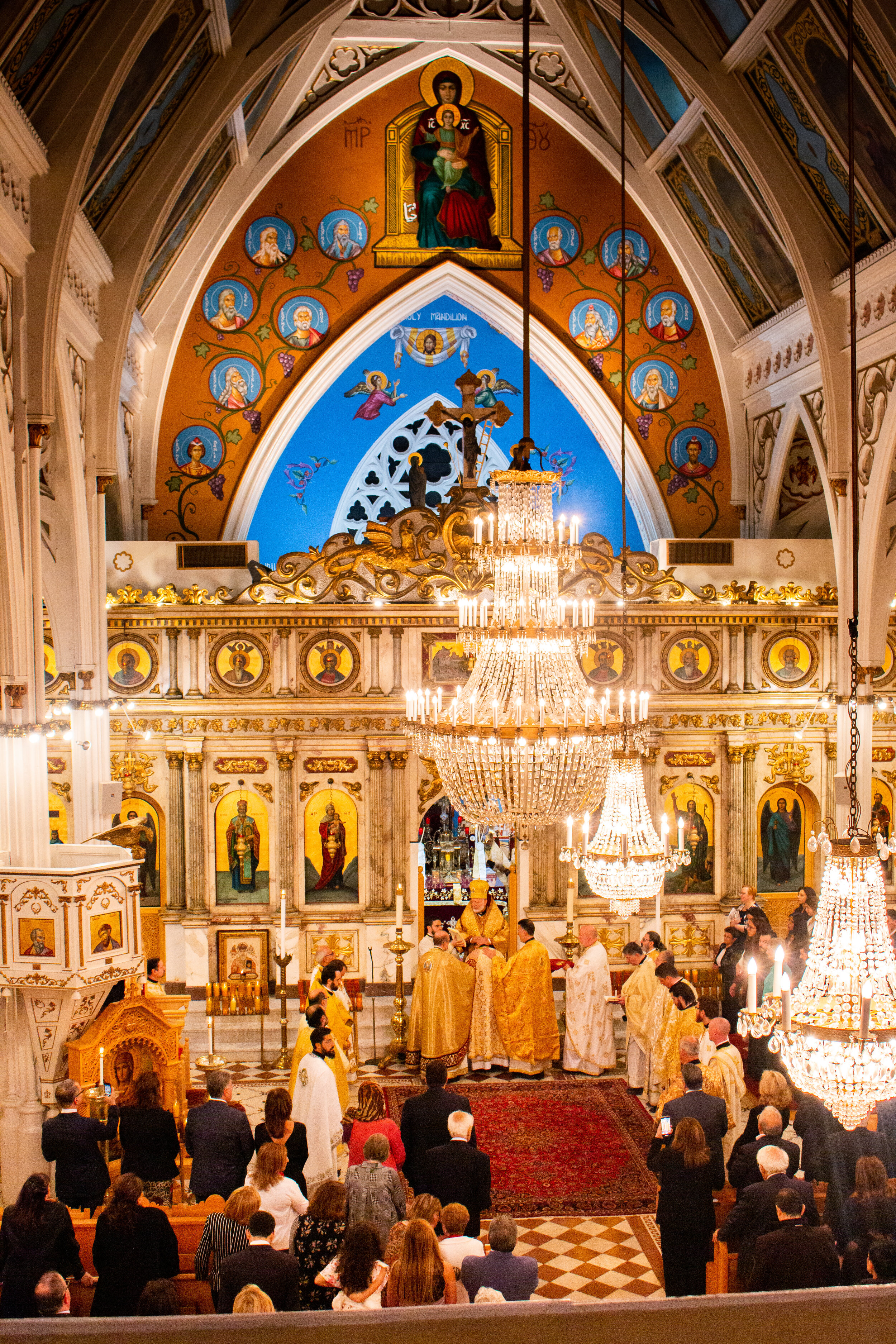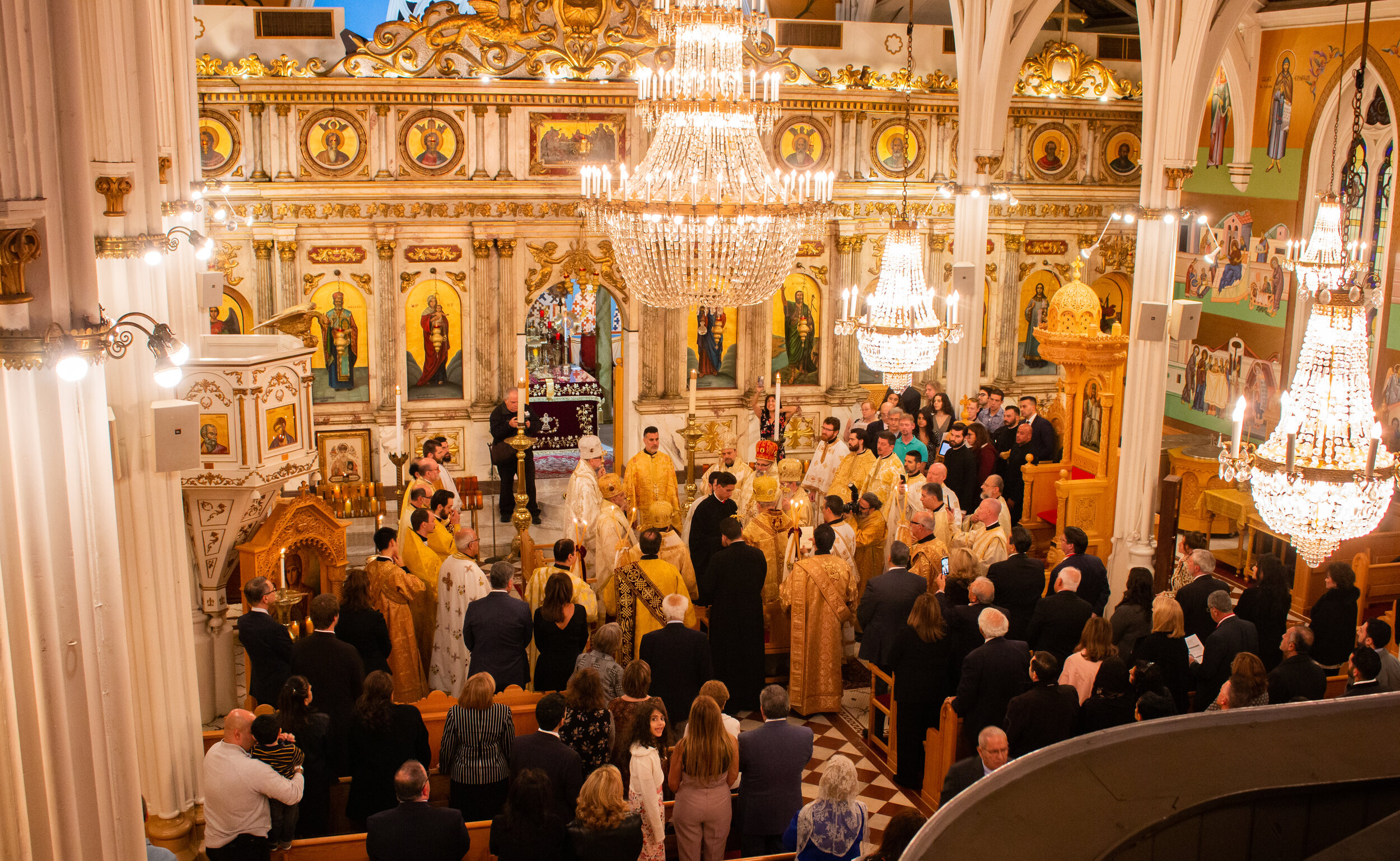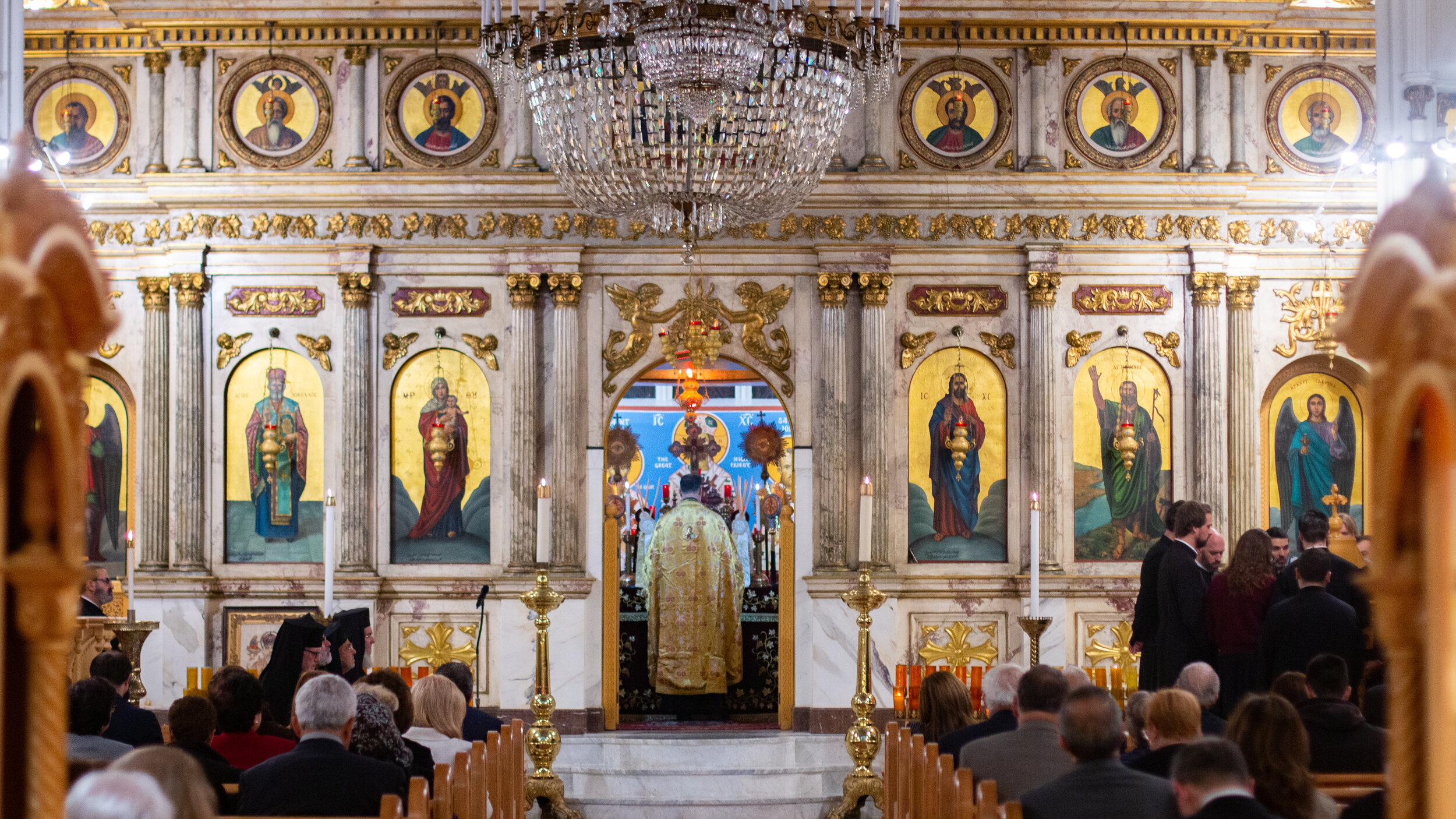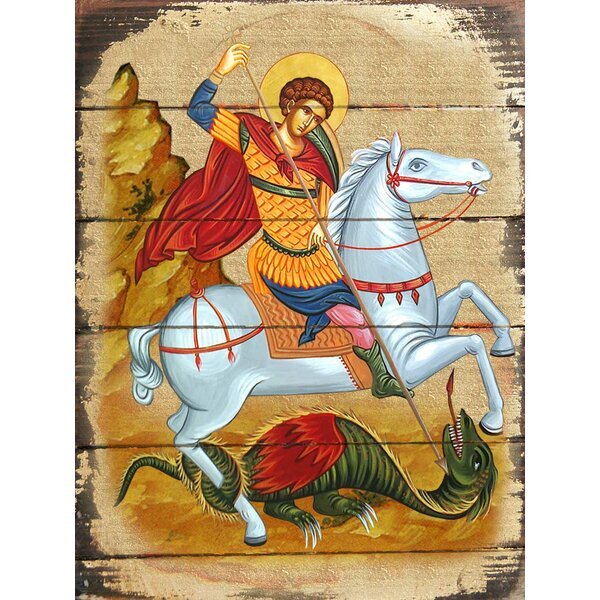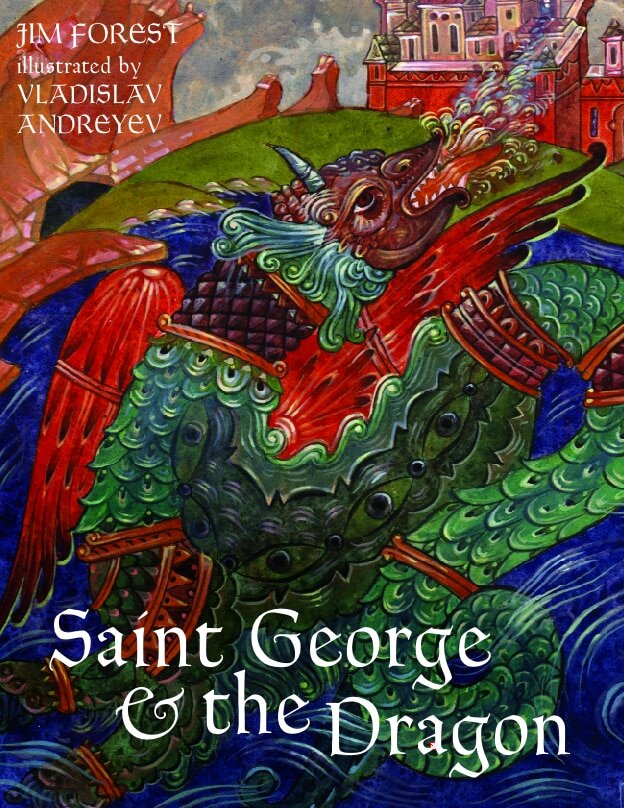May Resource Guide
I wanted to create an overview of the various Feast Days or special Liturgical Days coming up this month. This month we begin with the Feast of Feast: Pascha! As a parent, I know what a difficult task it can be to stay ahead of the Liturgical calendar, particularly during a busy season like this one, so I hope to help other parents by providing timely reminders and age appropriate resources to help share the Faith with their children. I want to provide ways to more easily engage/connect our Liturgical lives, not only with our participation in the life of the church, but in our homes as well. In this guide you will find an overview of each day mentioned above, fun ways to participate using what you have at home, or what you can easily gather or print, book recommendations, and I’ve included links to additional resources I’ve found. I pray that together we can raise up the next generation of Christians who love God with all their hearts and minds!
Source: https://www.goarch.org/pascha
Pascha!
Great and Holy Pascha - Before midnight on Saturday evening, the Odes of Lamentation of the previous day are repeated. The Orthros of the Resurrection begins in complete darkness. The priest takes light from the vigil light and gives it to the faithful, who are holding candles. The priest sings: "Come ye and receive light from the unwaning light, and. glorify Christ, who arose from the dead", and all the people join him in singing this hymn again and again. From this moment, every Christian holds the Easter candle as a symbol of his vivid, deep faith in the Resurrection of Jesus Christ as Savior. In many churches the priest leads the people outside the church for a procession, where he reads the Gospel which refers to the Angels statement: "He is Risen; He is not here," (Mark 16:1-8).
Then comes the breathless moment as the people wait for the priest to start the hymn of Resurrection, which they join him in singing, repeatedly: "Christ has Risen from the dead, by death trampling upon Death, and has bestowed life upon those in the tombs". From this moment the entire service takes on a joyous atmosphere. The hymns are meaningful and full of expression. The people say, "It is the Day of Resurrection, let us be glorious, let us embrace one another and speak to those that hate us; let us forgive all things and so let us cry, Christ has arisen from the dead".
The Divine Liturgy of Saint John Chrysostom then begins. At the end of the Liturgy, a part of the iconic homily of Saint Chrysostom is read, which calls upon the people to "Take part in this fair and radiant festival. Let no one be fearful of death, for the death of the Savior has set us free . . . O Death, where is thy sting? O Hades, where is Thy victory? Christ is Risen and Thou art overthrown. To Him be glory and power from all ages to all ages." It is the most joyful service! Christ is Risen!
Source: GOA
Source: HERE
Source: HERE
Activities:
Set up a festive and beautiful table and have a special breakfast of dyed eggs, Pascha bread and Pascha cheese and breakfast foods!
Have an egg hunt for the kids and enjoy the day! Christ is Risen ☦️
Enjoy your Pascha Basket! You can see my blog post on How to Prepare a Traditional Pascha Basket along with recipes HERE
Four Icons for Pascha lesson and Fabric Learning Set by Orthodox Pebbles - this is a great resource to bring with you to the service for little ones to interact with the icon of the resurrection, and the various happenings of the day (candle lit procession, tomb, etc).
*May 3 - St George the Great Martyr
(original feast day April 23rd but moved because of Holy Week)
St George Great Martyr and Trophy-bearer was a Christian Roman soldier killed under Diocletian at the beginning of the fourth century. He is also the patron saint of Moscow, Georgia, and England, amongst other places. According to tradition, St George was born to a Christian family during the late 3rd century. His father was from Cappadocia and served as an officer of the army. His mother was from Lydda, Palestine. She returned to her native city as a widow along with her young son after the martyrdom of George's father, where she provided him with a respectable education and raised him in piety. He joined the army and proved to be a charismatic soldier and consequently rose quickly through the military ranks of the time. By his late twenties he had gained the titles of tribunus (tribune) and later comes (count). By that time St George had been stationed in Nicomedia as a member of the personal guard attached to Roman Emperor Diocletian (reign 284–305).
In 303, Diocletian issued an edict authorizing the systematic persecution of Christians across the Empire. St George, when he heard the decision of the emperor, distributed all his wealth to the poor, freed his servants, and then appeared in the Senate. The brave soldier of Christ spoke out openly against the emperor’s designs. He confessed himself a Christian, and appealed to all to acknowledge Christ: “I am a servant of Christ, my God, and trusting in Him, I have come among you voluntarily, to bear witness concerning the Truth.” An enraged Diocletian proceeded in ordering the torture of this apparent traitor and his execution. He bore the weight of a large stone on his chest, was stretched on a wheel of knives, was buried in a pit with only his head above ground for three days and three nights, and was given a poisonous potion to drink from a magician. From all this, God healed and preserved him. When the Saint raised a boy from the dead through his prayer to God, the Empress Alexandra, wife of Diocletian, converted to Christianity. The furious Emperor imprisoned the Saint and beheaded Him in 303 AD. George's body was then returned to Lydda for burial, where Christians soon came to honour George as a martyr.
St George and the the Dragon
Of the many miracles worked by the holy Great Martyr George, the most famous are depicted in iconography. In the saint’s native city of Beirut were many idol-worshippers. Outside the city, near Mount Lebanon, was a large lake, inhabited by an enormous dragon-like serpent. Coming out of the lake, it devoured people, and there was nothing anyone could do, since the breath from its nostrils poisoned the very air. On the advice of the demons inhabiting the idols, the local ruler came to a decision. Each day the people would draw lots to feed their own children to the serpent, and he promised to sacrifice his only daughter when his turn came. That time did come, and the ruler dressed her in her finest attire, then sent her off to the lake. The girl wept bitterly, awaiting her death. Unexpectedly for her, St George rode up on his horse with spear in hand. The girl implored him not to leave her, lest she perish.
The saint signed himself with the Sign of the Cross. He rushed at the serpent saying, “In the Name of the Father and of the Son and of the Holy Spirit.” St George pierced the throat of the serpent with his spear and trampled it with his horse. Then he told the girl to bind the serpent with her sash, and lead it into the city like a dog on a leash. The people fled in terror, but the saint halted them with the words: “Don’t be afraid, but trust in the Lord Jesus Christ and believe in Him, since it is He Who sent me to save you.” Then the saint killed the serpent with a sword, and the people burned it outside the city. Twenty-five thousand men, not counting women and children, were then baptized. Later, a church was built and dedicated to the Most Holy Theotokos and the Great Martyr George.
Activity Ideas :
Listen to a Song about St George by Gigi Baba Shadid
Slay Your Own Dragon - One great way to help kids remember the story is by acting it out. Have your kiddos dress as a soldier and create your own dragon to slay! It can be out of pillows/blankets, or something you print and create (HERE), or I’ve even heard of one mom who bought a dragon piñata!
Make a St George Shield - St George was an officer in the army, so one way to remember him is by creating a part of his attire! This can also be used with the above activity. Find an inspirational shield craft HERE.
Book Recommendations:
St George and the Dragon by Jim Forest
Saint George and the Dragon by Margaret Hodges
St George and the Dragon Small Paterikon for Kids by Potamitis Publishing
St George and the Dragon Hardcover by Potamitis Publishing
Icon from Uncut Mountain Supply
May 5 - Great Martyr Irene
Great Martyr Irene was born in Persia during the fourth century. She was the daughter of the pagan king, and her parents named her Penelope. She was very beautiful, and her father kept her isolated in a high tower from the time she was six so that she would not be exposed to Christianity. He also placed 13 young maidens in the tower with her and an old tutor by the name of Apellian was assigned to give her the best possible education. Apellian was a Christian, and during her lessons, he taught her about Jesus, and the Christian Faith, and Christian virtues.
Penelope decided to dedicate herself to Christ and not marry, and she refused to marry any of the suitors her father had chosen for her. She chose to be baptized and took on the Christian name Irene. She even urged her own parents to become Christians and destroyed all her father’s idols. When King Licinius learned that his daughter refused to worship the pagan gods, he was furious. He attempted to turn her from Christ by having her tortured. She was tied up and thrown beneath the hooves of wild horses so that they might trample her to death, but the horses remained motionless. Instead of harming her, one of the horses charged her father, seized his right hand, and tore it from his arm. The horse then knocked him down and began to trample him. St. Irene demanded to be untied, and through her prayers, her father was unharmed with his hand still intact.
Seeing such a miracle, her father and mother, and over 3,000 others professed Christ and turned from the pagan gods. Resigning his administrative duties, he devoted himself to the service of the Lord. St. Irene lived in the house of her teacher and began to preach Christ among the pagans, converting them to the path of salvation.
When Sedecius, the new chief officer of the city, heard of this miracle, he summoned Apellian (the teacher) and questioned him about Irene’s life. Apellian replied that Irene, like other Christians, lived in strict temperance, devoting herself to constant prayer and reading holy books. Sedecius summoned Irene, urged her to stop preaching about Christ, and attempted to force her to sacrifice to the idols. St. Irene staunchly confessed her faith before him, not fearing his wrath, and prepared to suffer for Christ. Sedecius ordered she was thrown into a pit filled with vipers and serpents. St. Irene spent ten days in the pit and remained unharmed, with an angel of the Lord protecting her and bringing her food. Sedecius ascribed this miracle to sorcery, and subjected St. Irene to many other tortures. However, she remained unharmed. Under the influence of her preaching and miracles even more people were converted to Christ and turned away from the worship of idols.
Whatever it is, the way you tell your story online can make all the difference.
Soon, Sedecius was overthrown by his son, Savorus, who persecuted Christians with an even greater zeal than his father. St. Irene traveled to her hometown of Magedon in Persia to meet Savorus and his army to ask him to end the persecutions. When he refused, St. Irene prayed and the entire army was blinded. She prayed again and they received their sight once more. In spite of this, Savorus refused to recognize the power of God. Because of his insolence, he was struck and killed by a bolt of lightning.
Later, St. Irene traveled to the city of Callinicum (on the Euphrates River in Syria). King Numerian, the son of Sebastian, was the ruler. When St. Irene began to teach about Christ, she was arrested and tortured by the pagan authorities. She was placed into three bronze ovens which were heated by fire. She was transferred from one to another, but miraculously remained uninjured. Thousands of idolaters embraced Christianity as a result of this wondrous event. King Numerian instructed his men to continue torturing the saint in order to force her to sacrifice to idols. Once again, the tortures were ineffective, and many people turned to Christ.
St. Irene then traveled to the city of Constantina, forty miles northeast of Edessa. By 330, Persian King Sapor II had heard of St Irene’s great miracles. To prevent her from winning more people to Christ, Sapor ordered that she be arrested, beheaded, and then buried. However, God sent an angel to raise her up again, and she then traveled to the city of Mesembria. After seeing her alive and hearing her preach, the local king was baptized along with many of his subjects. Wishing to convert even more pagans to Christianity, St. Irene traveled to Ephesus, where she taught and performed many miracles. At this place, the Lord revealed to her that the end of her life was approaching. St. Irene left the city accompanied by six people, including her former teacher, Apellian. On the outskirts of the town, she found a new tomb in which no one had ever been buried. After making the Sign of the Cross, she went inside, directing her companions to close the entrance to the cave with a large stone. When Christians visited the cave four days later, the body of St. Irene was nowhere to be found.
Source HERE
May 9 - Thomas Sunday
Thomas Sunday - We call the Sunday after Pascha ‘Thomas Sunday’ in the Orthodox Church as it was 8 days after the resurrection that Jesus appeared to St Thomas. The Gospel reading is from John 20:19-29 which recounts St Thomas’ doubt of Jesus’ Resurrection and then his very clear proclamation of Jesus’ divinity!
After the crucifixion and burial of Christ, the disciples were gathered in a room with the doors closed and locked for fear of the Jews. On Sunday evening, after Passover, Jesus entered the room and stood in their midst, greeting them with the words, "Peace be with you." He showed the disciples his hands, feet, and side. Thomas was not there with the disciples when Jesus appeared, and he did not accept the testimony of the other disciples concerning Christ's Resurrection. He stated, "Unless I see the mark of the nails in his hands and put my finger in the mark of the nails and my hand in his side, I will not believe." 8 days later, the disciples were gathered together again with Thomas present, and the Lord appeared in the same manner. Standing in their midst he said, "Peace be with you." He then spoke directly to Thomas and said, "Put your finger here and see my hands. Reach out your hand and put it in my side. Do not doubt but believe." Thomas answered, "My Lord and my God!" Jesus replied by saying, "Have you believed because you have seen me? Blessed are those who have not seen and yet have come to believe."
The doubt of Thomas is described in the Church hymns as “blessed,” because it was not a doubt out of resistance to truth, but one that desperately desired a truthful answer—a “doubt which gave birth to faith” when the answer was revealed. Thomas’ doubt turned faith led him to one of the clearest confession of Christ's divinity, addressing Jesus as my Lord and my God! This verse is often referenced in defense of Jesus being truly God!
Drawing of St Thomas is from the Pascha to Pentecost Coloring Book by Draw Near Designs
Activity Ideas :
Proclaim our Faith - Have children create and decorate signs that say “Christ is risen!” to display in your home. These signs can include or take the shape of crosses, Easter eggs, or other seasonal items. The Paschal season is a time to proclaim our faith in the Resurrection, even though, like St Thomas, we did not witness it ourselves.
Trust Fall - Set up a mini “trust fall” by having a person cross their arms and fall backwards without looking, into the arms of the person behind them waiting. This would work best with a parent being the one to catch the falling person.
Ask: How did you know that your parent would catch you?
Explain: This is similar to having Faith. We can’t see God, but we know that he is there! Remind them that Christ said: “Blessed are those who have not seen and yet believe."
Serve Food with Holes to Illustrate the Story - Blogger Catholic Icing has a great idea to illustrate the nails in Jesus’s hands … serve doughnuts to represent this story. The holes in the doughnuts are representative of the nail holes in Jesus’ hands. Any food with a hole in it will do such as those flower shaped cookies, bagels, peach ring candy, or even onion rings. You can see more of her blog HERE.
You can make your own donuts with this recipe from Bless This Mess Blog HERE
For older children, teens, and beyond
Watch this video “How Should the Church Deal With Doubt?” by Y2AM
Video discussion questions:
We normally associate Thomas with doubt. Is that really fair?
What does that mean about our doubts?
Watch this video “Faith and Doubt” by Y2AM
Video discussion questions:
Read the story of Thomas’ doubts about the Resurrection of Christ, John 20:24–29. How did Jesus react to Thomas’ doubts?
When have you had doubts about your faith? What were those doubts? How did you resolve them, or how are you working to resolve them?
How has working through doubts helped you grow as a person?
Give an example that shows how faith and knowledge are different.
May 11 - Saints Cyril and Methodius
Saints Cyril and Methodius - were brothers and Christian Missionaries in the 9th century. They brought Christianity to the Slavic people. They influenced the culture, religion, and written language of all slavic people. They received the title "Apostles to the Slavs".
In the 9th century, Saint Prince Rastislav (r. 846–870), the ruler of the Slav state of Moravia (now in the Czech Republic), sent a request to Byzantium asking for missionaries to bring the Christian Faith to his people in their own language. In response to Prince Rastislav’s request, two devout and well-educated brothers named Cyril and Methodius were sent as missionaries to Moravia. From an aristocratic family, these brothers had grown up in Thessalonica, where many Slavs lived, from whom they learned the Slavic language. Before arriving in Moravia in 863, Cyril had finished developing the first alphabet for the Slavic language. The brothers used this alphabet in translating Church books into the Slavic language, which came to be known as Old Church Slavonic. They taught the alphabet and literacy, introduced the use of Slavonic in the Church services, and began training men for the diaconate and priesthood as the first step in raising up a native clergy for the Moravian Church. In 867 the brothers traveled to Venice with some of their Moravian disciples, hoping to find a bishop to ordain these disciples as priests and deacons. In Venice they were sharply opposed by Latin clergy who insist that the services may only be celebrated in Latin, Greek, or Hebrew. In response, Cyril called this the “Three-Language Heresy”; he quoted 1 Corinthians 14 in defense of the use of the vernacular language in the Church services.
St Cyril died early in 869, but before he died, he begged his brother to continue the holy work among the Slavs. Methodius promised to do so. Methodius was consecrated as Archbishop of Pannonia and Moravia, with full authorization to continue using Slavonic in the Church services. However, when Archbishop Methodius returned to Moravia, he was arrested and imprisoned by the Frankish-Germanic. In 873, when Pope John VIII (r. 872–882) learned what had happened to Archbishop Methodius, he demanded and managed to obtain his release. But the Roman Church was unwilling to give much direct support to Methodius, for fear of offending the expanding Frankish and Germanic powers. Despite repeated harassment by the German clergy, Methodius continued to promote Church life in the Slavonic language in Moravia for twelve more years, until his death in 885. Led by their many disciples, many Bulgarians embraced the Christian Faith and were delighted when Methodius’s disciples entered their land, bringing the services in Slavonic, which they much more readily understood than Greek. In 893, the Bulgarians officially adopted Slavonic as the official language of both their Church and State. Old Church Slavonic is this alphabet which continues to this day to serve the nations of Bulgaria, Serbia, Russia, Ukraine, and Byelorussia, as well as the Czech, Slovak, and Polish Orthodox Christians. This feast day is now celebrated as a public holiday in many Slavic countries which includes public processions with the cross and their icons.
Source HERE
Activities
Pray and Support a Missionary - Since Sts Cyril and Methodius were missionaries, you can connect and find a list of current missionaries serving all over the world HERE on OCMC (Orthodox Christian Mission Center) and encourage them in their important work! This could be a wonderful opportunity to collect money to help support a missionary! You can donate to OCMC HERE
Write a Letter or Email to a Missionary - What a better way to honor these wonderful saints than to encourage those who are serving Christ to the ends of the earth! Connect with them HERE through OCMC (Orthodox Christian Mission Center).
Book Recommendations :
Saints Cyril and Methodius by Potamitis Publishing
Stories of the Saints by Carey Wallace (check your local library)
Saints Cyril and Methodius Illuminator to the Slavs by Jerry McCollough
Cyril and Methodius of Thessalonica sold by SVS Press
May 16 - Myrrh Bearing Women Sunday
Sunday of the Myrrh Bearing Women - The second Sunday after Pascha, the Orthodox Church commemorates a number of people connected with the final events of Jesus’s life who were important witnesses to His death and resurrection. These are the myrrh-bearing women who came to anoint the body of Jesus, Joseph of Arimathea who buried Jesus, and Nicodemus who helped him. We gratefully remember them for their faith, courage, and devotion to the Lord.
On this day we remember the women who went to Jesus’ tomb to anoint His body, only to discover it empty. The Myrrhbearing Women did not mysteriously disappear following the Resurrection of Christ. There were many of them, and we have the names: Mary Magdalene, Mary the mother of Joseph the Little and Jose, Salome, Mary of Clopas, Mary and Martha, the sisters of Lazarus, Susanna, and the mother of the sons of Zebedee. Our Holy Fathers also include Mary the “mother of Jesus,” as she is referred to in John 19:25, who we see and know was at the foot of the Cross.
They ministered unto Him with their own possessions, even during His crucifixion and entombment; and afterwards, neither losing faith in Him after His death, nor fearing the wrath of the Jewish rulers, they came to the tomb, bearing the myrrh-oils they had prepared to annoint His body. It is because of the myrrh-oils, that these God-loving women brought to the tomb of Jesus that they are called the Myrrh-bearers. We know the names of only seven of these women: Mary Magdalene; Mary the Mother of James and Joses; Joanna the wife of Chuza; Salome the mother of the sons of Zebedee; Susanna; and Mary and Martha, the sisters of Lazarus.
Together with them we celebrate also the secret disciples of Jesus, Joseph and Nicodemus. Joseph of Arimathea was a rich and noble man, and a member of the Privy Council of Jerusalem. He dared to ask Pilate for the undefiled body of our Savior, which he took and buried in his own tomb. Accompanying Joseph to the sepulcher was Nicodemus, who was one of the leaders of the Pharisees. He had believed in Christ when, at the beginning of His preaching of salvation, he came to Him by night. Nicodemus brought 100 pounds of myrrh and aloes to scent and embalm the body of Christ out of reverence and love (John 19:39)
Jesus turned things upside down by proclaiming joy to the world through the Cross. He raised to great prominence these humble women who would otherwise be unknown to the world. He gave them an integral role in proclaiming the Good News to the world (Mark 16:1-10), through they witness, that the sting of death has been overcome through Jesus’ rising from the dead. Life reigns! As long as the Gospel is proclaimed, we will celebrate the memory of the Myrrhbearing Women and rejoice with them.
Scriptures : Matthew 27:55–61, Matthew 28:1–10, Mark 15:40–16:11, Luke 23:50–24:10, John 19:38–20:18).
Activities
Learning About the Resurrection and Fabric Learning Set by Orthodox Pebbles - this is a great resource to “act” out the story with paper puppets. Simply cut out the scenes of the crucifixion and resurrection and arrange them in order (pages 9–10). Then, cut out the paper puppet characters of Mary Magdalene, the angel, and the tomb, and use them to reenact the scene from today’s Gospel (Mark 15:43–47; 16:1–8).
Sing or Listen to the Paschal Hymn “Let God Arise” Together: (Watch on Youtube HERE) In this hymn two of the stanzas are dedicated to the Myrrhbearers and their witness. These hymns build upon the scriptural accounts of their visit to and discovery of the empty tomb:
The Myrrhbearing Women, at the break of dawn,
Drew near to the tomb of the Life-giver.
There they found an angel sitting upon the stone.
He greeted them with these words:
“Why do you seek the living among the dead?
Why do you mourn the incorrupt amid corruption?
Go, proclaim the glad tidings to His disciples.”
Watch this 7 minute video on YouTube about The Myrrh Bearing Women (great for kids too):
Sensory Activities: Since Myrrh is a fragrant spice, why not make it a sensory experience and create your own myrrh infused experience as a beautiful way to connect with the story of the myrrh bearers! Suggestions include:
Light some Myrrh Incense in your censor, sold HERE
Make your own Myrrh infused bath salts using Myrrh Essential Oil Recipe HERE
Myrrh Playdough using Myrrh Essential Oils Recipe HERE
Book Recommendations:
The Holy Myrrhbearing Women by Potamitis Publishing
Read the story in the Scriptures of the myrrh-bearing women in the Children’s Bible Reader (p. 257) and discuss: Why were the women going to the tomb? Why on Sunday? What is myrrh? What did they find? What did they do?
May 21 - St Constantine and St Helen
Saint Helen- St Helen was the mother of St Constantine the Great, the Emperor. All her life she longed to go to the Holy Land to venerate the places dear to every Christian: the places where Jesus taught, the places where He was born, where He taught, where He was crucified and resurrected. Saint Helen wanted to find the Holy Cross upon which Jesus was crucified. This was a difficult task since it had been 300 years since the crucifixion. Also, the Romans turned the crucifixion site on Golgotha into ruins. In the year 326 AD, the Empress, St Helen and the Patriarch Macarius of Jerusalem searched for the cross. They determined the likely location and the site was cleared. They noticed an unusual and aromatic herb growing all around. Saint Helen named it Basilico (or basil as it it now known), meaning “King” or “Royal” in Greek. Buried in the ground beneath the basil were 3 crosses. No one knew which of the crosses were the Life-Giving Cross of Jesus. So Saint Helen and the Patriarch prayed. There was a funeral procession passing by, so they took the women who had recently died and had her come in contact with each of the crosses. Nothing happened with the first two crosses. When he touched her with the third cross, she was healed immediately. Thus, the True Cross of Christ was identified much to the amazement of those who witnessed it. Saint Helen gave the Holy Cross to the Patriarch to be lifted high for all the faithful to see and venerate. In 335, on September 14Th, the building of the Temple of the Resurrection began. The Patriarch once again exalted the Life-Giving-Cross for veneration. Since then, every year on September 14th we celebrate the feast of we call the Exaltation of the Holy Cross. After this, Saint Helen, in her zeal to glorify Christ, erected churches in Jerusalem at the sites in Bethlehem at the cave where our Saviour was born, another on the Mount of Olives whence He ascended into Heaven, establishing many others throughout the Holy Land, Cyprus, and elsewhere.
St Constantine - St Constantine was born in 272 AD in modern day Serbia. He was the emperor of a large part of the Roman Empire. His Mother, St Helen, taught him about Christ and his commandments. When he was young, he was kidnapped and taken hostage by Galerius, the persecutor of Christians. After living in his palace for many years, one day he managed to escape and return to his homeland and his family. Years later, a man named Maxentius declared war against Rome, destroying and conquering many cities on his way to Constantine. One the eve of battle, while Constantine was discussing his battle plan with his generals, a sign appeared in the sky. It was a shiny cross with the inscription “In this, conquer”. In a dream later that night, Jesus appeared to him and instructed him to make a banner with a cross. With this sign, He said, he would be victorious in every battle. Constantine gave orders for this banner to be made and the soldiers carried it to the frontline, along with their shields that they painted crosses on. They were victorious in battle against Maxentius and his army and they fled. Over time, Constantine granted rights to the Christians who had been living in fear and danger, and now they could freely build churches and gather for liturgies and prayer and practice their faith. In 313 he founded Constantinople which was the capital city of the Greek Orthodox Empire until 1453.
Activities:
Paper Puppets and Lesson on the Discovery of the Holy Cross by Orthodox Pebbles - In this FREE download, you will find printable paper puppets to recreate the story of the discovery of the Holy Cross HERE
Decorate/Adorn The Cross - Why not take the story of St Helen’s discovery of the cross and beautify and adorn your own cross! You can create a wooden cross using two wooden craft sticks glued together in the shape of a cross or a store bought wooden cross (places like Michael’s, Hobby Lobby or the Dollar Tree have these in the craft section). Decorate it using colored tissue paper or markers or whatever else you have on hand. You could even put real flowers and basil on top as well, and display it on your home altar to remind you of the life-giving cross!
Bury and Discover the True Cross - Using 3 wooden crosses you create out of craft sticks, find a place in your yard or garden to dig and hide 3 crosses! I gave my kids the crosses to bury a few days before the feast. Then after you tell them the story, give your kids shovels or using their hands, send them out to dig up and find the crosses! Make it extra fun by adding a marking on the “true cross” so they can recreate the discovery of the cross (even using the printable paper puppets fro the Orthodox pebbles materials (linked above and HERE).
Searching for the Cross Sensory Bin (featured in October 2020 Orthodox Children’s Calendar)
NEED: 1 Gallon sized plastic bag
3 Cups rice
10-20 drops of green food coloring
1 TBSP vingar
Fresh Basil
3 crosses (any crosses you have - or make out of craft sticks)
Baking dish and baking tray
DIRECTIONS Pour rice, food coloring (10-20 drops of green), and vinegar into a gallon sized plastic bag. Seal tightly and have your kids shake, squeeze, and toss the bag for a few minutes until the rice is evenly coated with the food coloring and looks like your desired color. Then pour rice onto a cookie tray and leave it to dry for at least an hour. You can store it in a plastic bag for later. Once dry, place it in a 9X13 dish with the basil and bury 3 crosses (any crosses you have - or make out of craft sticks) under the rice and basil. Have your kids dig down like Saint Helen did to find the crosses. They can also take turns finding the crosses!
Listen to the Song “Finding the Cross” by Gigi Baba Shadid on Amazon Music - in this fun song meant for children, you can learn more about the discovery of the Holy Cross by St Helen in a way that is fun and engaging for young children! It’s catchy and easy for kids to remember and sing along!
Coloring Page By Draw Near Designs, featured in the Royal Saints Coloring Book
Book Recommendations:
Saint Constantine the Great “In This Conquer” Paterikon for Kids Series book by Potamitis Publishing
Saint Helen and the Finding of the Holy Cross Paterikon for Kids Series book by Potamitis Publishing
My Warrior Saints (Hardcover) (St Constantine on page 43) By Potamitis Publishing
Heaven Meets Earth : Celebrating Pascha and the Twelve Feasts (Elevation of the Cross page 10) by Ancient Faith Publishing (also Available on Amazon)
The Great Feasts by Exaltation Press (Exaltation of the Holy Cross page 30)
May 23 - Sunday of the Paralytic
Sunday of the Paralytic- On the 3rd Sunday after Pascha, we commemorate the Paralytic man who Jesus healed in John 5:1-9, and we celebrate this miracle! To recount the story for you: Jesus went up to Jerusalem and there was a pool, which is called in Hebrew, Bethesda, that had five porches. In these porches lay a great multitude of sick people, blind, lame, paralyzed... All of these people were waiting for the moving of the water to be healed. For an angel went down at a certain time into the pool and stirred up the water; then whoever stepped in first, after the stirring of the water, he was made well of whatever disease he had.
Now a certain man was there who was unable to walk and was waiting for 38 years to be healed. When Jesus saw him lying there, he knew he had been in that condition a long time, and He said to him, “Do you want to be made well?” The sick man answered Him, “Sir, I have no man to put me into the pool when the water is stirred up; but while I am coming, another steps down before me.” Jesus said to him, “Rise, take up your bed and walk.” And immediately the man was made well, took up his bed, and walked.
Synaxarion: This event is placed here, because Christ worked this miracle at the time of the Hebrew Pentecost. For, having gone up to Jerusalem for the Feast, He went to the pool with five porches, which Solomon had built and which was called the Sheep’s Pool, because it was there that they used to wash the entrails of the sheep that had been slaughtered in the Temple for sacrifice; the first person to enter in, when the water was stirred by an Angel once a year, was made well. Christ found in that place a man who had been ill for 38 years and who lay there, despairing of finding anyone to place him in the water; from this we learn how beneficial endurance and patience are; and that since He was going to grant is Baptism, which cleanses every sin, God provided that miracles should be wrought in Old Testament through water, so that, when Baptism was bestowed, it might be accepted. Jesus came to this paralytic, who was called Jarus, and questioned him. Christ, knowing that he has been wasting away with illness for so long a time, said: “Rise, take up thy bed and walk.” At once, he became well, and taking his bed upon his shoulders, lest the event should seem illusory, he walked to his house. Since it was the Sabbath, he was forbinned by the Jews to walk. He explained that the One Who had healed him told him to walk on the Sabbath, thought he did not know Who He was; for when a crowd had gathered in that place, the Gospel says, Jesus secretly departed.
After this, Jesus found him in the Temple and said to him: “Behold, thou art made whole; sin no more, lest a worse thing come upon thee.” Some say- though incorrectly- that Jesus spoke these words, because this man would later smite Him when He stood before Caiaphas, the High Priest and would, as a result, be granted a worse trial than paralysis, that of being tormented in the eternal fire, not just for 38 years, but for ever; rather, the Lord showed that the illness of paralysis befell him because of his sins. However not all illness comes from sins, but in some cases it comes from physical causes, from gluttony, indifference, and many other factors. The paralytic, knowing that it was Jesus Who had healed him, made this known to the Jews; they, goaded into defending themselves, sought to kill Christ, because He had supposedly broken the Sabbath. Christ said much to them about this, maintaining that it is right to do good on the Sabbath; and that it was He Who, being equal to the Father, had said that one should keep the Sabbath; and just as His Father had worked, so did He work.
It should be known that this paralytic is different from the paralytic in St Matthew’s gospel; for the healing of the latter took place in a house, with men assisting him, and he was told; “Thy sins are forgiven thee.” This man was healed at the Porchases, and he had no man to help him, as the Holy Gospel says; but, like the other paralytic, he did take up his bed. It is celebrated now, because it occurred during the season of Pentecost, as did the wonders involving the Samaritan woman and the blind man. We celebrate St Thomas and Myrrh-Bearers in assurance of Christ’s Resurrection from the dead; but we celebrate the other wonders leading up to the Ascension, because they were done at different times in the season of the Hebrew Pentecost, and because St John, whose Gospel is read during this period, is the only Evangelist to mention them.
Activities:
Listen to the story told for kids by Let Us Attend (3 minutes long)
Re-Enact the Story of Jesus healing the lame man (via Holy Trinity ) :
Place a blue blanket or cloth on the floor for the “pool.”
Put an old, broken stuffed toy or doll on a pillow “pallet” next to you, to represent the paralyzed man.
Call children from their rooms and ask them to each bring a stuffed toy or a doll. Have each child sit with their toy around the pool.
Read the first part of the Gospel, up until it introduces the paralyzed man.
Shake the “water” and have the children pick up their toys and put them in the water. The first toy to touch the water is “healed”; the rest have to sit back down and wait for the angel to trouble the water again.
Continue reading & acting out the Gospel, conducting the conversation between Jesus, the paralyzed man (old, broken toy), and the Jews. Make sure the healed toy picks up his pallet and walks away. Ask the children what should happen to the people (toys) that haven’t been healed yet? (Ask Jesus to heal them too, wait for the angel to come again, etc.)
Wrap up by reminding children that there are two parts of this story: Remembering that Jesus healed the paralyzed man is the easy part, but Jesus also told him to “go and sin no more,” to live the rest of his life in a good way. And now all of the healed toys need to “go and sin no more,” in this case, by being put away.
Color the Icon of the Story
Light a candle and pray for those who are sick and suffering; those who are needy; those who are well; and your family and church family.
Christ Teaching in the Temple at Mid-Feast sold by Legacy Icons
May 26 - Mid-Pentecost
Synaxarion - The fifty days following Pascha until the Feast of Pentecost are known as the period of the Pentecostarion in the Orthodox Church. At the mid-point between these great feasts of Pascha and Pentecost, on the 25 day which is always a Wedneday, is one of the most beloved feasts for the most devout Orthodox Christians known quit simply as Mid-Pentecost. Mid-Pentecost is to the Pentecostarion what the Third Sunday of Great Lent which honors the Holy Cross is to the period of Great Lent. It is a day which helps us focus on the central theme of the entire period. Whereas the mid-point of Great Lent reminds us to bear up the Cross of Christ bravely so that we may daily die with Christ in order to experience the Resurrection of our Lord, so also the mid-point of the Pentecostarion enlightens us regarding the theme of the fifty days following Pascha - which is the acquisition of the Holy Spirit poured out as a gift upon all the faithful who partake of the living water which is Christ Himself.
The central theme woven throughout the period of the Pentecostarion therefore is water. This becomes the central theme of the period because it is the central theme of the Gospel of John which we read in its entirety during the Pentecostarion and which naturally flows into the Acts of the Apostles which is also read during this period in its entirety. This theme appears for the first time on Pascha itself in the joyous Canon of the Feast of Feasts written by Saint John the Damascene when he invites us to "drink a new drink," not "brought forth from a barren rock," as in the Old Testament under Moses, but which rather "springeth forth from the grave of Christ." Then during the Paschal Divine Liturgy the priest processes with the Gospel and chants loudly from Psalm 67:27 saying: "In the congregations bless ye God, the Lord from the well-springs of Israel."
Understanding the Icon: Most icons showing biblical events from the traditional accounts of the life of Jesus make obvious sense in relation to the church year, however this icon, does not make obvious sense, in spite of the fact that it is an easily recognized scene. It depicts the event called recorded in Luke 2:41-49 “Now his parents went to Jerusalem every year at the feast of the passover. And when he was twelve years old, they went up to Jerusalem after the custom of the feast. And when they had fulfilled the days, as they returned, the child Jesus tarried behind in Jerusalem; and Joseph and his mother knew not of it…And it came to pass, that after three days they found him in the temple, sitting in the midst of the doctors, both hearing them, and asking them questions. And all that heard him were astonished at his understanding and answers. And when they saw him, they were amazed.”
It is rather odd that the image of the young Jesus among the elders became used for Mid-Pentecost, because the biblical text that connects the Mid-Pentecost icon type with that festival, and is sometimes used as the title of the icon, actually refers to a different (but similar) event supposedly later in the life of Jesus, as written in John 7:14: “Now about the midst of the feast Jesus went up into the temple, and taught. And the Jews marveled, saying, How knows this man letters, having never learned? Jesus answered them, and said, My doctrine is not mine, but his that sent me.”
The icon is inscribed: “In the Middle of the Feast Jesus Entered into the Temple…” That excerpt originally referred to the adult Jesus and to the Jewish feast, but The Orthodox Church made use of that “middle of the feast” notion to apply the image instead to Mid-Pentecost. In any case, it shows us how intimately icons are connected with the liturgical calendar of The Eastern Orthodox Church.
Fun Fact: In Russia, Mid-Pentecost is traditionally a time when both the fields and water are ritually blessed.
Activities :
Listen to the Troparion for the Feast (track 25) by Gigi Baba HERE
In the middle of the feast, fill my thirsty soul with the waters of piety, as to all, Savior, you cried: Let the thirsty come to me and drink. Fountain of our life, Christ God, glory to you.
May 30 - Sunday of the Samaritan Woman
Synaxarion- Since on this Sunday Christ openly confesses Himself to be the Messiah, which means “Christ” or “the anointed one” (for messa is the Hebrew word for oil), for this reason, the present feast is placed in the week of Mid-Pentecost; and also because, on the previous Sunday, Christ wrought a miracle at the Sheep’s Pool. On this Sunday, He works a miracle at Jacob’s well, which Jacob himself dug and bestowed upon his son Joseph.
Jesus came to Sichar and sat down at about the sixth hour of the day. A certain woman came from the city to draw water, the Disciples having gone to purchase food. Jesus asked her for water, but she excused herself by saying that the Jews had no dealings with the Samaritans (St. John 4:9); for she knew who He was, both by His accent and by His apparel. Jesus raised their conversation to a higher level by introducing the idea of spiritual water, which connotes abundance and cleansing power, since the Spirit is always likened to water and fire. The woman was sure, from the fact that He had not brought a bucket, that He did not have such water, and added that the well was deep. She then went on to talk about their forefather Jacob, saying that he had dug the well and that he and his children had drunk from it, commending the rich resources of the well, and also its usefulness and the coolness of its water. Christ, however, did not say that He was greater than Jacob, so as not to frighten the woman, but again He spoke about the water, thus proving His superiority; for one who drank from that water, He said, would in no wise be thirsty.
The woman asked for this water, but He told her to call her husband, since His words needed to be more firmly understood. She denied that she had a husband. Jesus, knowing all things, replied: “Thou hast well said, I have no husband: For thou hast had five husbands,” which the Law forbiddeth, and the sixth whom thou now hast, since thou livest with him unlawfully, “is not thy husband” (St. John 4:17-18). The woman replied to Him, calling Him a Prophet. The woman then said: “We have heard from the Scriptures that the Messiah cometh Who is the Christ” (St. John 4:25). Jesus, foreknowing the woman’s gratitude, said: “I am He.” The Samaritans, too, knew about the Messiah from the books of Moses, especially from the verse, “The Lord God shall raise up a Prophet for you” (Deuteronomy 18:15), and many others. At the conclusion of this conversation, the Disciples returned and were amazed at Christ’s extreme condescension in talking with a woman. In the meantime, they besought Him to eat, both because of His weariness and on account of the heat of the day. But He spoke to them about eternal food, namely, the salvation of mankind and how they needed to harvest the labors of the Prophets.
St Photini- Preserved in Holy Tradition, we know that the woman in question was the Samaritan woman, who was subsequently named Photine by Christ, and who, along with her seven sons, received the crown of martyrdom in the reign of Nero, after much hardship, in the course of which her flesh was scraped, her breasts were cut off, her hands were crushed, fine reeds were inserted under her fingernails, she was forced to swallow molten lead, and suffered countless other torments.
Activities:
Listen to the story told for kids by Let Us Attend (4 minutes long)
Color the Icon of the Story + Explanation of the Icon by Antiochian Archdiocese
Book Recommendations:
Christina’s True Heroes by Maria Khoury which includes a chapter titled Saint Photini
Read the story from the Bible (John 4:5-42)

